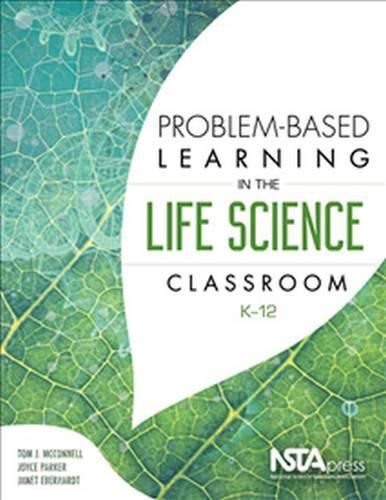Readings Newsletter
Become a Readings Member to make your shopping experience even easier.
Sign in or sign up for free!
You’re not far away from qualifying for FREE standard shipping within Australia
You’ve qualified for FREE standard shipping within Australia
The cart is loading…






Problem-Based Learning in the Life Science Classroom, K 12 offers a great new way to ignite your creativity. Authors Tom McConnell, Joyce Parker, and Janet Eberhardt show you how to engage students with scenarios that represent real-world science in all its messy, thought-provoking glory. The scenarios prompt K 12 learners to immerse themselves in analyzing problems, asking questions, posing hypotheses, finding needed information, and then constructing a proposed solution. In addition to complete lesson plans supporting the Next Generation Science Standards, the book offers extensive examples, instructions, and tips. The lessons cover four categories: life cycles, ecology, genetics, and cellular metabolism.
But Problem-Based Learning in the Life Science Classroom, K 12 doesn t just explain why, how, and when to implement problem-based learning (PBL). It also provides you with what many think is the trickiest part of the approach: rich, authentic problems. The authors facilitated the National Science Foundation funded PBL Project for Teachers and used the problems in their own science teaching, so you can be confident that the problems and the approach are teacher tested and approved.
$9.00 standard shipping within Australia
FREE standard shipping within Australia for orders over $100.00
Express & International shipping calculated at checkout
Problem-Based Learning in the Life Science Classroom, K 12 offers a great new way to ignite your creativity. Authors Tom McConnell, Joyce Parker, and Janet Eberhardt show you how to engage students with scenarios that represent real-world science in all its messy, thought-provoking glory. The scenarios prompt K 12 learners to immerse themselves in analyzing problems, asking questions, posing hypotheses, finding needed information, and then constructing a proposed solution. In addition to complete lesson plans supporting the Next Generation Science Standards, the book offers extensive examples, instructions, and tips. The lessons cover four categories: life cycles, ecology, genetics, and cellular metabolism.
But Problem-Based Learning in the Life Science Classroom, K 12 doesn t just explain why, how, and when to implement problem-based learning (PBL). It also provides you with what many think is the trickiest part of the approach: rich, authentic problems. The authors facilitated the National Science Foundation funded PBL Project for Teachers and used the problems in their own science teaching, so you can be confident that the problems and the approach are teacher tested and approved.